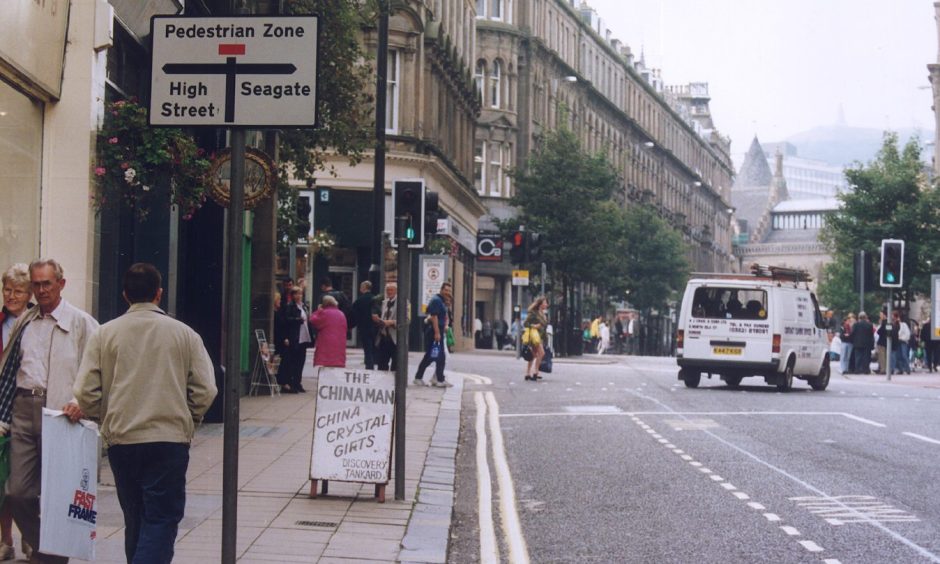
The 1980s was a decade that can be neatly summed up by the saying ‘more is more’.
And Dundee council chiefs bidding to keep shoppers in the city back then certainly seemed to take this view.
It was feared Dundonians were heading to Perth, Aberdeen and beyond to fill their carrier bags
So, in 1989, they planned a fourth shopping centre that would add to the retail offering at the Overgate, Keiller and Wellgate centres.
Aided by a think-tank, officials looked at building a mall in the Seagate to expand the city centre and increase shoppers’ options.
So would tills have been ringing?
Would the public have bought in and then bought big?
Was this a missed opportunity for retail renaissance or would it have been £75 million down Dundee’s drains?
Who would have been left to foot the bill?
The city centre was failing to realise its full potential.
Hillier Parker were commissioned to undertake a shopping study in 1988.
Market research showed Dundee was losing retail trade to other cities and towns.
The demand for larger retail shops was the foreseeable trend.
Investment was being hampered by the lack of opportunities to improve the prime shopping area and provide retailers with “shops of appropriate sizes”.
They reported back to councillors in April 1989 and proposed a £75m shopping centre in Seagate to stop people leaving the city for “high-quality goods”.
It was the yuppie era of ‘loadsamoney’.
The chartered surveyors suggested the money for the fourth shopping centre could be privately funded without the need from cash from taxpayers.
It was suggested that new shops would be attracted to the area and present retailers would be encouraged to expand.
The aim was to make Dundee a successful tourist and shopping destination, drawing people from other parts of the country.
There was the promise of 1,000 jobs
They envisaged the 300,000 square foot centre would contain a large department store, an extended Marks & Spencer and several smaller shops.
The plan would have transformed a large area just off the city centre, from the south of Murraygate to Dock Street, and Commercial Street to Allan Street.
Gellatly Street would have disappeared.
It would have been slightly smaller than the Wellgate with parking for 1,800 vehicles.
Hillier Parker said “strong interest” in the concept had been found among top retailers.
There would be 1,000 part-time and full-time jobs created.
The plan also called on the Overgate Centre owners to “refurbish it as soon as possible” while accepting its role would be a “secondary shopping area”.
Voice of authority was against Dundee shopping centre plan
Hillier Parker’s remit had not included designing the £75m mall so we have no idea how it would have looked, though they predicted opening by 1994.
Further work was planned to see how the shopping centre would fit into the city centre including the implications for the Seagate bus station.
The Chamber of Commerce gave the idea the thumbs down.
Director Harry Terrell said additional prime retail floor space was required but 30,000 square feet was “substantially in excess” of what should be provided.
Only a limited number of major stores were not already represented in the city.
The deliberate separation of the major multiples and independent specialists is liable to lead to a retail apartheid.”
Chamber of Commerce director Harry Terrell
He said it was likely most of the occupants of the proposed centre would relocate from within the city centre and not be replaced, “leaving a desert”.
“The committee are also concerned about the consultants’ proposal to concentrate the major multiples in a single area,” he said.
“It is important for both consumers and retailers alike that there is a mix of retailers throughout the city.
“The deliberate separation of the major multiples and independent specialists is liable to lead to a retail apartheid.”
Mr Terrell said that would have been to the detriment of the consumer and the city.
“We are of the view that a lively and attractive mix of retail facilities are what the consumer wants and the city needs,” he said.
Commercial property firm Land Securities were the owners of the Overgate Centre and were far from impressed.
A spokesman for the company said they were about to refurbish the Overgate.
They would now be considering its position following the report.
Survey conducted on Dundee shopping centre plan
Tayside Regional Council reserved its position until it had considered the public response and commissioned a household survey.
The response in September 1990 found 41% of people felt the development would improve Dundee’s shopping centre.
Some 28% believed it would not.
The remainder thought it “might be an improvement”.
When asked how their shopping habits would change, 16% said they would visit the city centre more often and only 2% would do so less often.
Many of those surveyed anticipated the new complex would have a negative impact on the Overgate, Keiller and Wellgate centres.
It was hardly a stirring endorsement.
A report by chief planning officer Alistair Barrie recommended the redevelopment of the Seagate to accommodate a “prime shopping area”.
It went to a vote in November 1990.
The recommendation was opposed by SNP members Ken Guild and David Coutts who called for a six month deferral.
Mr Guild said approving the report would suggest a movement away from central shopping.
He called this a risky move when the Overgate was “struggling”.
Declining footfall had led to the grey shutters being pulled down on many units.
“My fear is that if we give the go-ahead, even in principle, we are going to send out dangerous signals to shopkeepers west of the City Square,” he said.
Mr Guild’s motion to defer a decision was defeated by 12 votes to six.
Councillors agreed in principle for a development at Seagate “sometime in the future”.
The public was told it could take 10 years to make the project a reality.
The Seagate development was scrapped
A recession inevitably followed.
In July 1992 the Labour administration was seeking council approval for another shopping survey to “establish Dundee as a regional shopping centre”.
Ian Luke said it had become apparent over the past three years that circumstances in Dundee had changed because of the recession.
“The implications are that the Seagate, which was at the heart of the last Hillier Parker report, has now become a very distant prospect,” he said.
Hillier Parker were commissioned for the second time in five years.
They said the scheme was realistic in the buoyant market of Thatcherism but the current and foreseeable conditions were very different.
They did not believe the Seagate scheme could be realistically achieved.
Listed buildings, costs of acquisition, multiple ownership of properties and “significant physical problems” were among the “number of difficult issues”.
The Seagate proposal was quietly killed off and attention moved to the Overgate Centre, which was radically redeveloped and reopened in 2000.
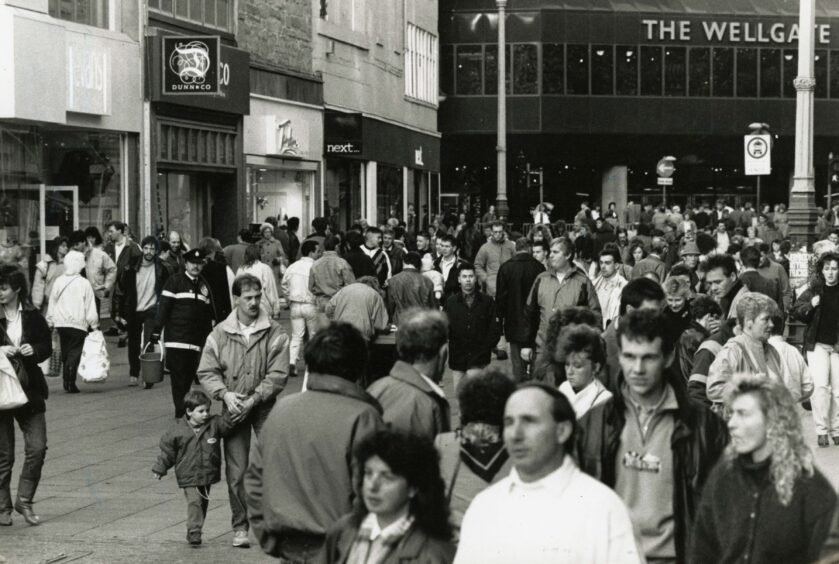
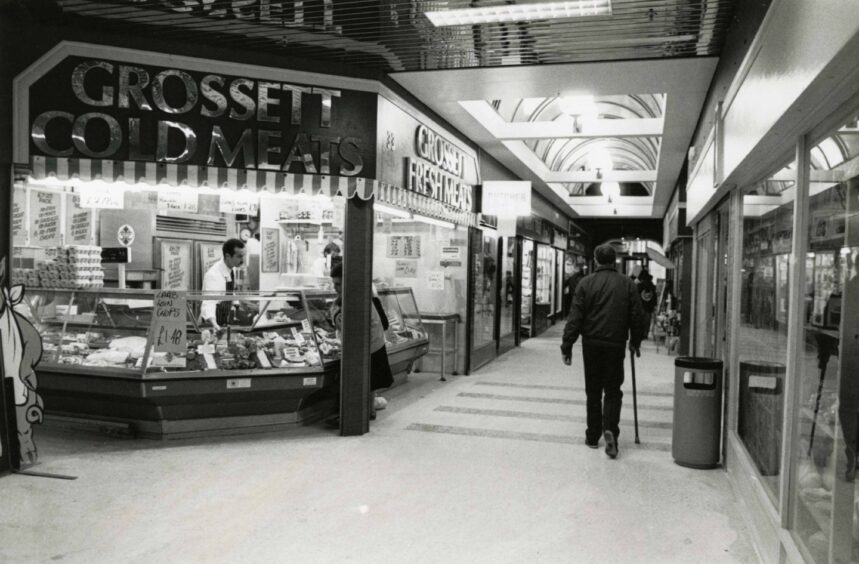
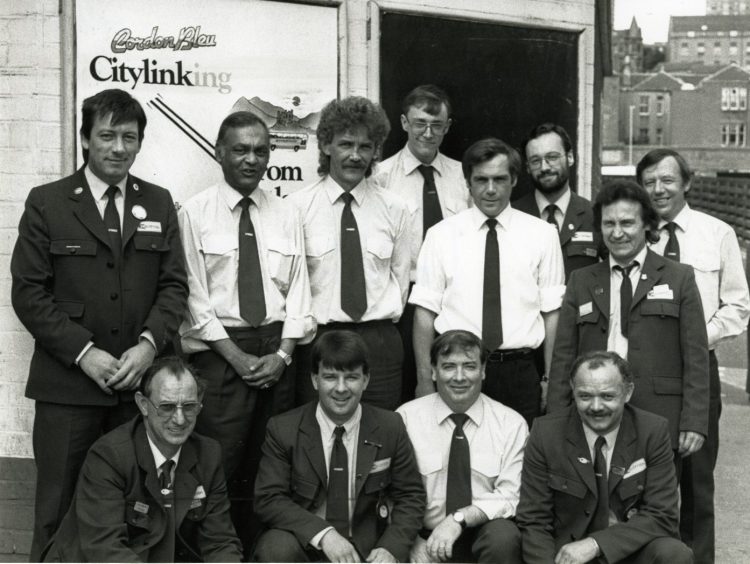
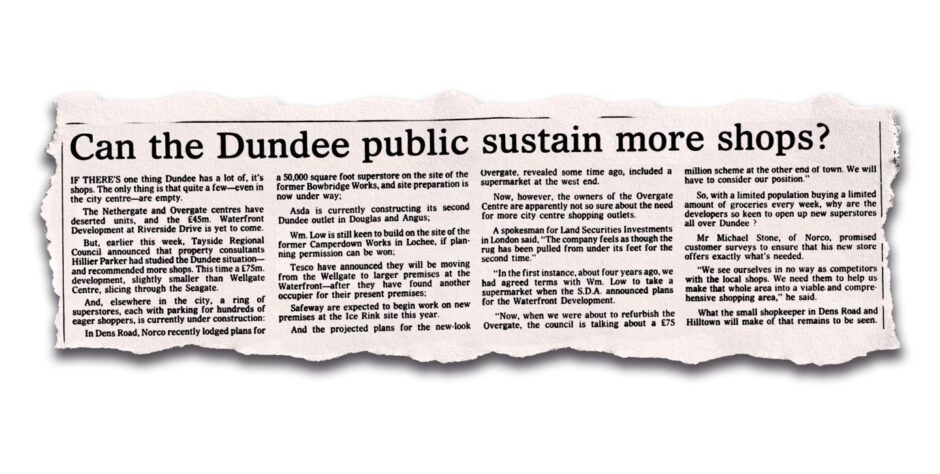
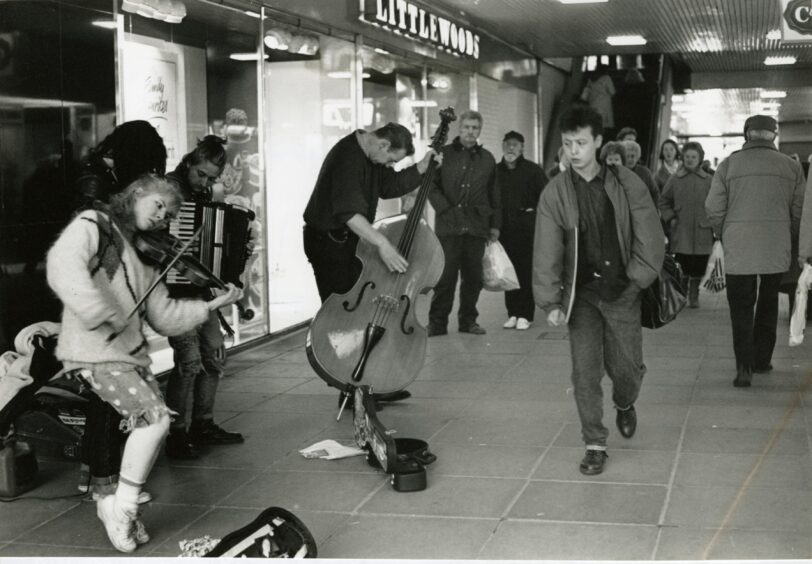
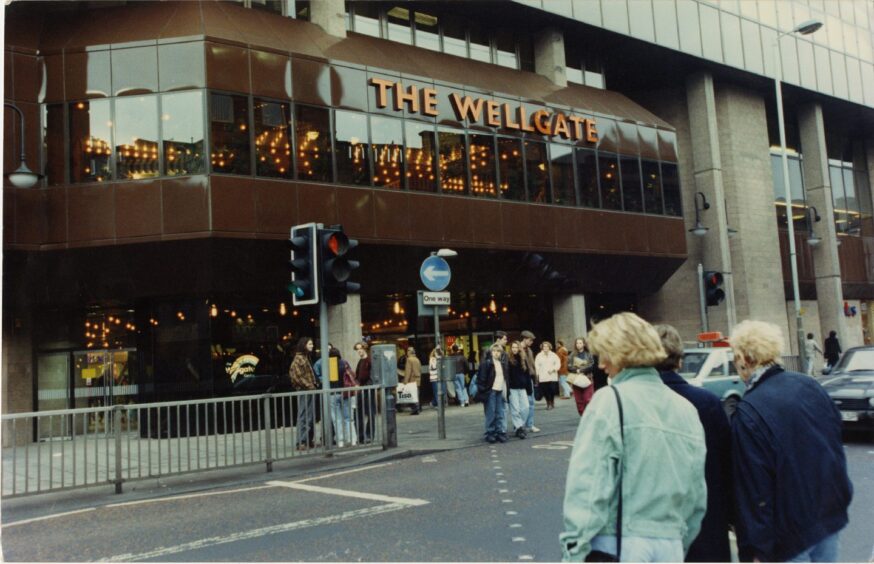










Conversation